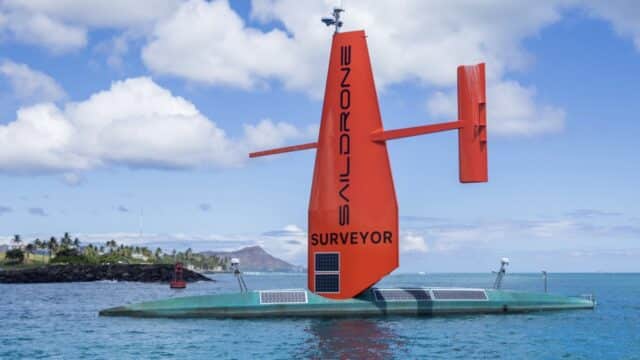NVIDIA technologies enable Saildrone to navigate the oceans with AI

Saildrone, a Bay Area startup, is redefining oceanic exploration and data gathering with its innovative use of autonomous uncrewed surface vehicles (USVs). With an impressive track record that includes tracking North Atlantic hurricanes, discovering underwater mountains, and mapping the world’s ocean floor, Saildrone is revolutionizing the way we interact with our oceans.
This game-changing technology utilizes a broad array of sensors in its USVs, with the data they gather processed by NVIDIA Jetson modules for efficient AI at the edge. The company is currently optimizing their prototypes with NVIDIA DeepStream software, a leap forward in intelligent video analytics.
With an eye on cost-effectiveness, Saildrone provides invaluable data for a variety of fields including science, weather forecasting, maritime security, and ocean mapping. The robust USVs have proven their mettle, with Vice President of Software Engineering, Blythe Towal, attesting that they’ve “sailed into three major hurricanes” and emerged intact.
Founded in 2012, Saildrone has raised a notable $190 million in funding and is part of NVIDIA Inception, a program that provides technical support and AI platform guidance. The company's involvement in numerous environmental studies further underscores the growing interest in its autonomous data collection technology.
One such study is being conducted by the University of Hawaii at Manoa, which is using three 23-foot Saildrone Explorer USVs to evaluate the impact of ocean acidification on climate change. The six-month mission aims to assess the ocean’s health around Hawaii, shedding light on how the burning of fossil fuels and farming affect marine ecosystems.
In an ambitious collaboration with Seabed 2030, Saildrone has set out to map the world's oceans by the end of the decade. Seabed 2030 is an initiative between the Nippon Foundation and the General Bathymetric Chart of the Oceans (GEBCO), with Saildrone CEO Richard Jenkins stating, “A complete map of the ocean floor is fundamental to achieving [a healthy ocean and a sustainable planet].”
The scientific community worldwide is embracing NVIDIA AI for various climate studies. The technology is being used for hyper-local climate modeling, renewable energy research, and even AI to improve carbon sequestration. To further their efforts, NVIDIA is developing Earth-2, the world’s most powerful AI supercomputer, to predict climate change.
The energy-efficient design of Saildrone's USVs enables data collection in challenging weather conditions and during extended missions, reducing the need for traditional boats and crews. The autonomous vehicles can also undertake tasks that would be hazardous for human crew members. Powered by solar and wind energy, they provide an eco-friendly alternative for robust data collection.
In the realm of AI, Saildrone leans on the NVIDIA JetPack SDK for hardware-accelerated edge AI on the Jetson platform. This technology allows for machine learning on the module for image-based vessel detection, aiding in navigation. Saildrone's USVs have an impressive sensor suite capable of producing high-resolution imagery, measuring wind, temperature, salinity, and dissolved carbon, and deep sonar mapping of the ocean and lake floors.
With NVIDIA DeepStream SDK at its disposal, Saildrone is developing AI applications and services to improve video, audio, and image analytics. This technology will allow Saildrone to perform image preprocessing and model inference at the edge, ensuring efficient machine learning even in the remote expanse of the ocean.
